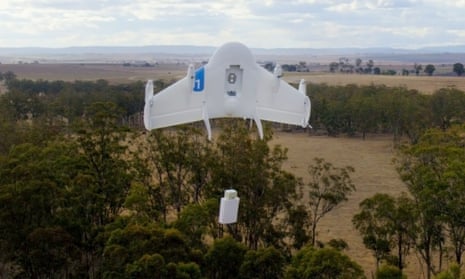Google has said it expects to begin delivering packages to consumers via drones in 2017.
David Vos, the leader for Google’s Project Wing, said his company was in talks with the Federal Aviation Administration and other stakeholders about setting up an air traffic control system for drones that would use cellular and internet technology to co-ordinate unmanned aerial vehicle flights at altitudes under 500ft (152m).
“Our goal is to have commercial business up and running in 2017,” he told an audience at an air traffic control convention near Washington.
Google and Amazon are among companies that have said they want to use drones for deliveries. The FAA is expected to publish final rules for commercial drone operations early next year.
Vos, who is co-chair of an FAA task force charged with coming up with a drone registry, said a system for identifying drone operators and keeping drones away from other aircraft could be set up within 12 months.
“We’re pretty much on a campaign here, working with the FAA, working with the small UAV community and the aviation community at large, to move things along,” he said.
“We think we can accomplish a lot in the next three, six, 12 months. And we’re hoping to get some strong support to make this happen.”
Vos said a drone registry, which the Obama administration hopes to set in place by 20 December, would be a first step towards a system that could use wireless telecommunications and other technology including cellphone apps to identify drones and keep them clear of other aircraft and controlled airspace.
He said Google would like to see low altitude “Class G” airspace carved out for drones, saying it would keep UAV away from most manned aircraft aside from low-flying helicopters, while enabling drones to fly over highly populated areas.
“There’s a lot that can be done in this market space,” Vos said.
He said the FAA and other stakeholders were looking at the possibility of controlling Class G airspace through for-profit airspace service providers, which would use wireless communications to co-ordinate drone flights and liaise with the air traffic control system for manned aircraft.

Comments (…)
Sign in or create your Guardian account to join the discussion